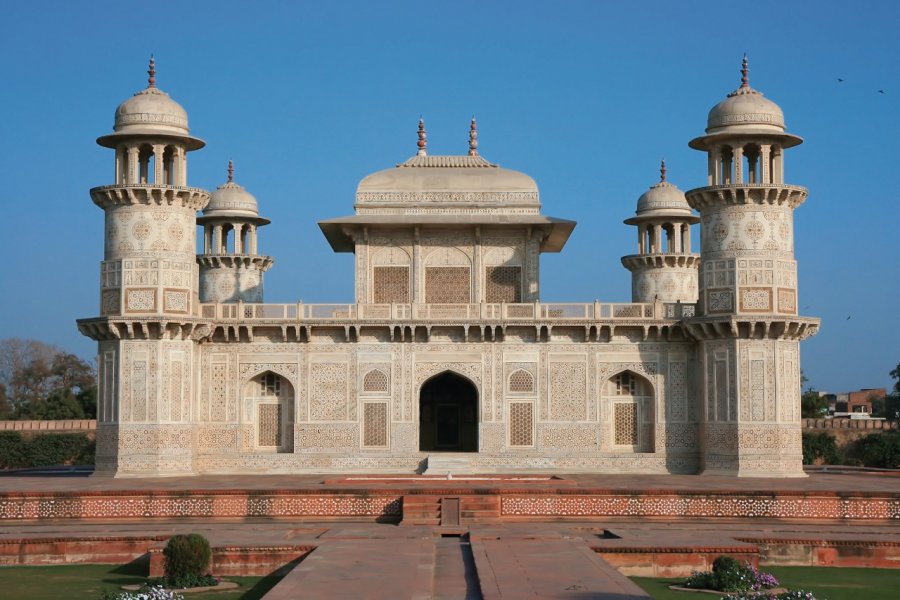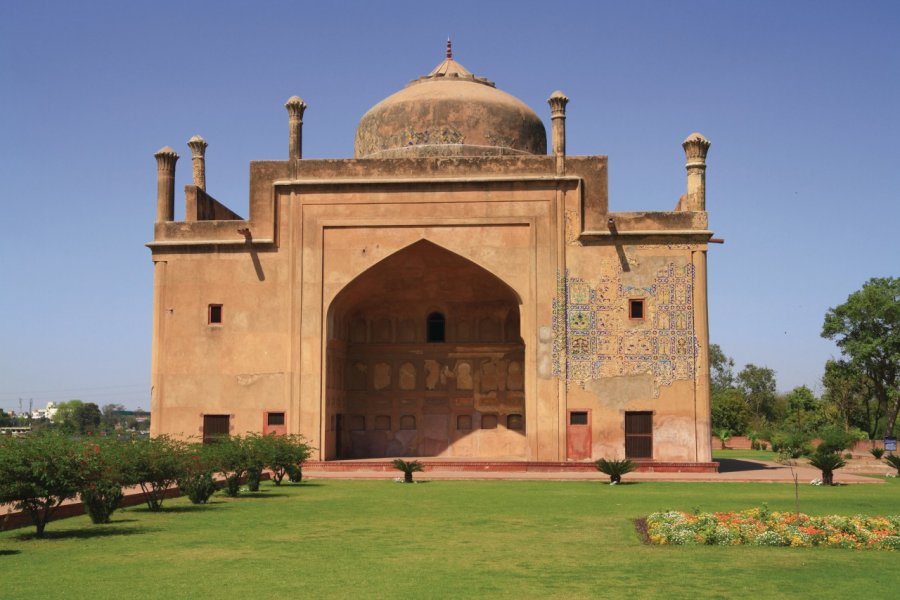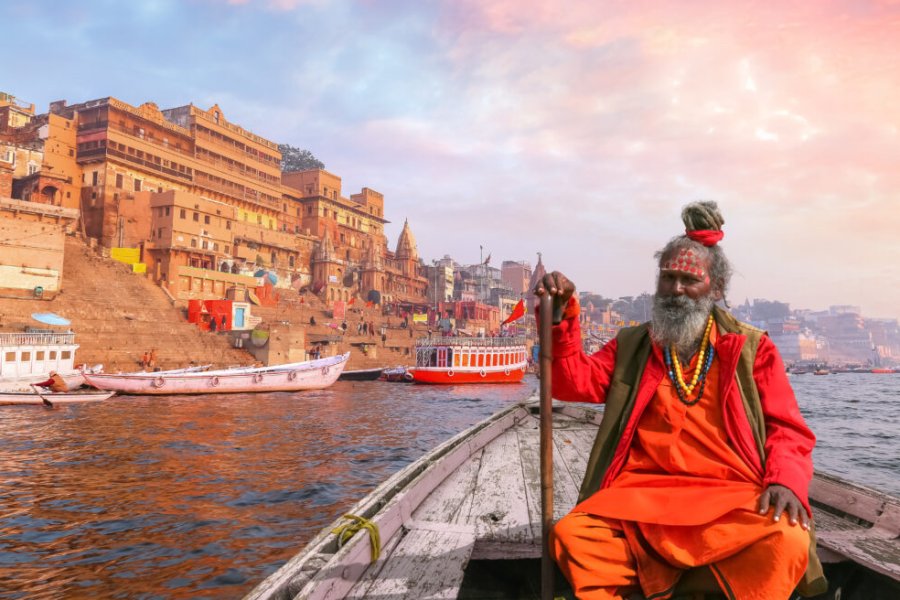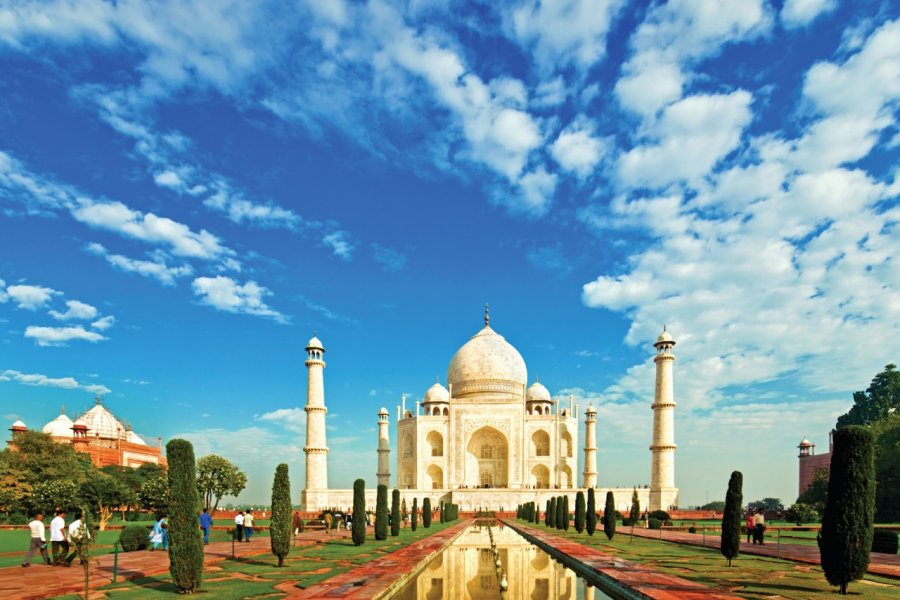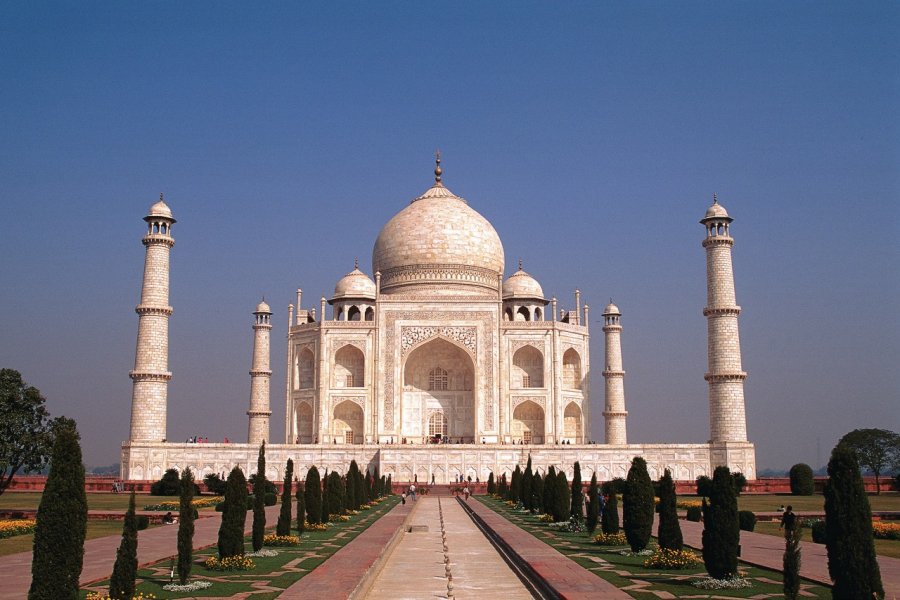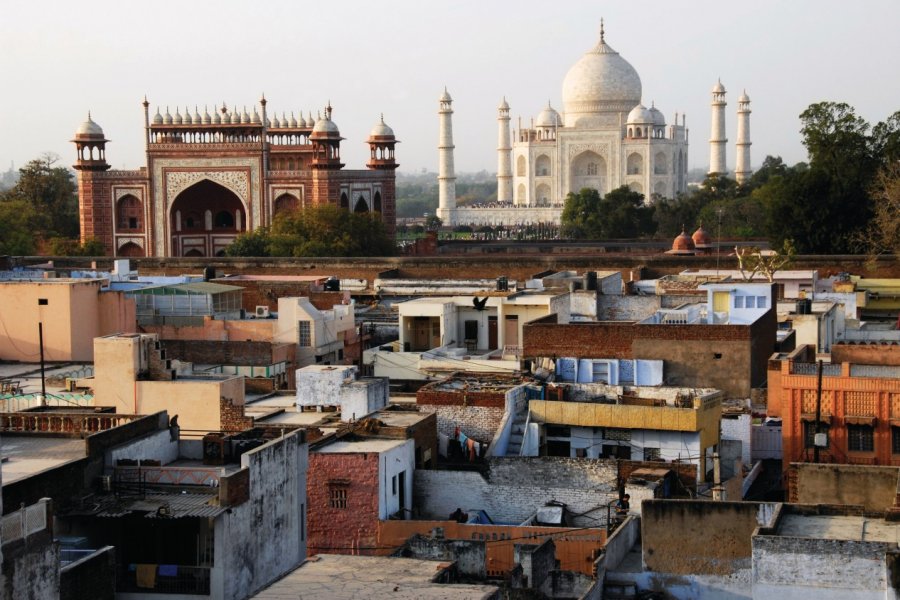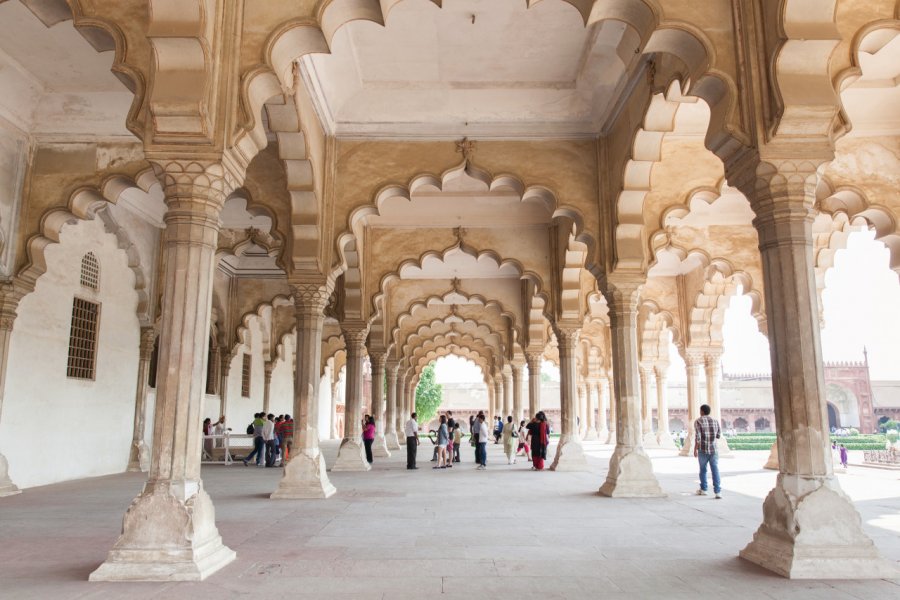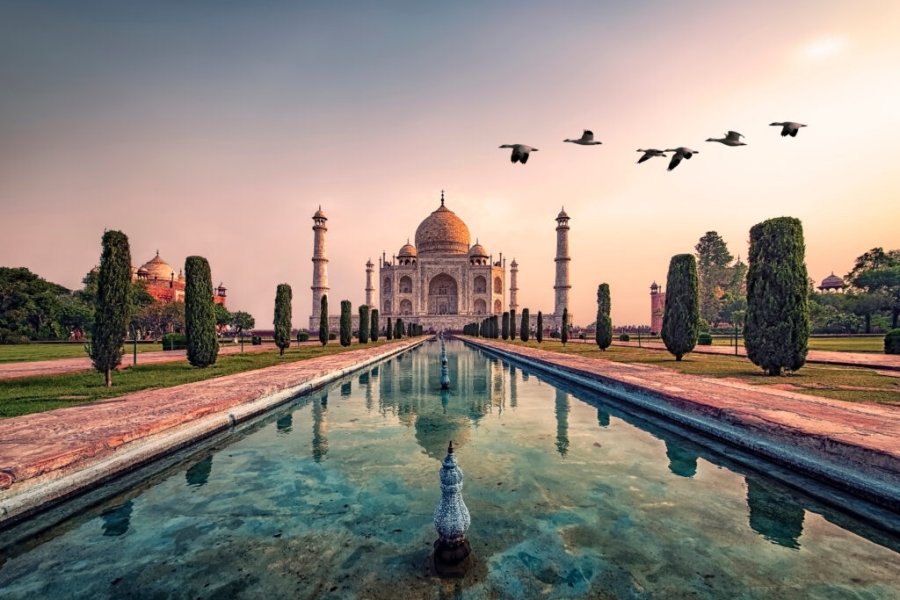Travel Guide Agra
Find an accommodation
Advertising
During the Mughal Empire, in the 16th and 17th centuries, Agra was intermittently the capital of the country. It reached its peak under the reigns of Akbar, Shah Jahan and Jahangir, the same rulers who shaped it architecturally. Akbar lived there at the beginning of his reign before settling in Fathepur Sikri and finally choosing Lahore, today in Pakistan. However, he came to end his life there in 1599. Jahangir soon abandoned Agra for Kashmir. As for Shah Jahan, he left a major imprint in the city: he built the Jama Masjid, part of the Red Fort and of course the Taj Mahal. It was his son Aurangzeb who moved the seat of government from Agra to Delhi.Today, Agra is a city turned towards industry. First of all, tourism, because the presence of the Taj Mahal attracts more than one million visitors per year and provides a living for 40% of the city's population. Then comes the steel industry, which shapes the modern face of the city. Blast furnaces belch their smoke in the distance and high-voltage lines pollute the landscape. Finally, there is the leather industry, with shoe factories. Despite a prosperous economy, Agra struggles to show it. Many of its streets are dirty and potholed, both in the old city and on Fatehabad Road, the street of luxury hotels. You have to go to the new town and the cantonment areas - Agra is still an important military place - to find some greenery and wide quiet avenues.
What to visit Agra?
Advertising
Suggested addresses Agra
Weather at the moment
Advertising
Organize your trip with our partners Agra
Transportation
Book your plane tickets
Car Rental
Boat rental
Accommodation & stays
Find a hotel
Holiday rental
Find your campsite
Tailor-made trip
Immersion travel
Services / On site
Activities & visits
Find a doctor


